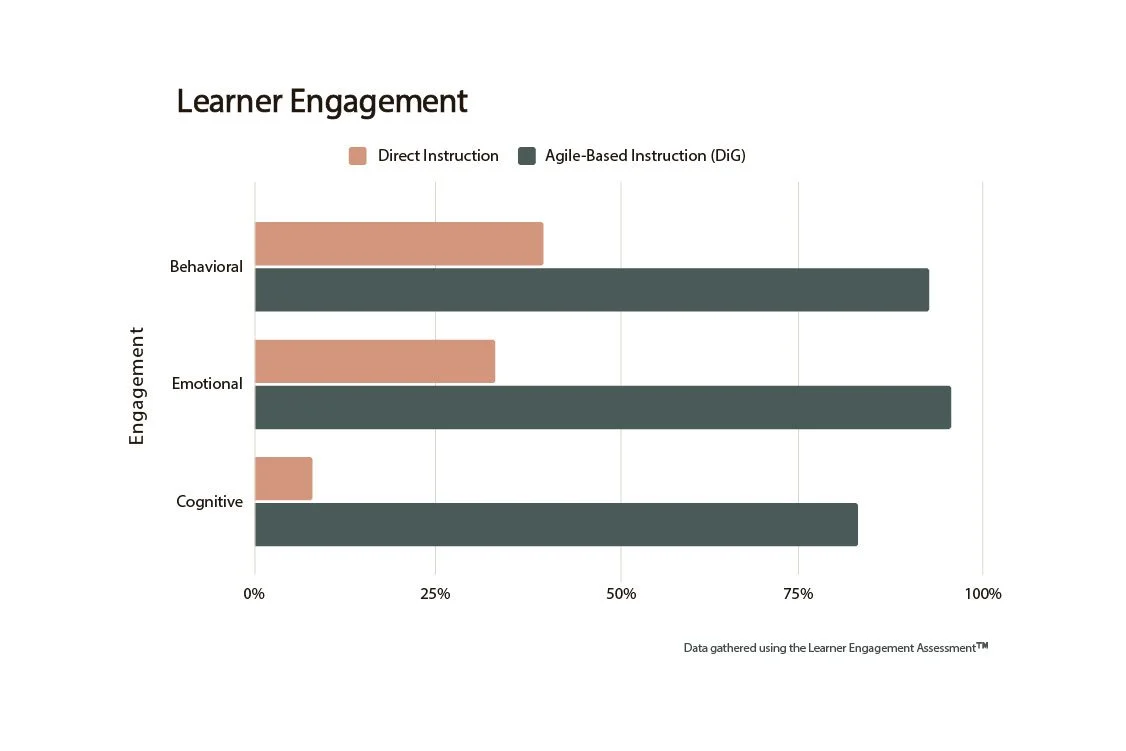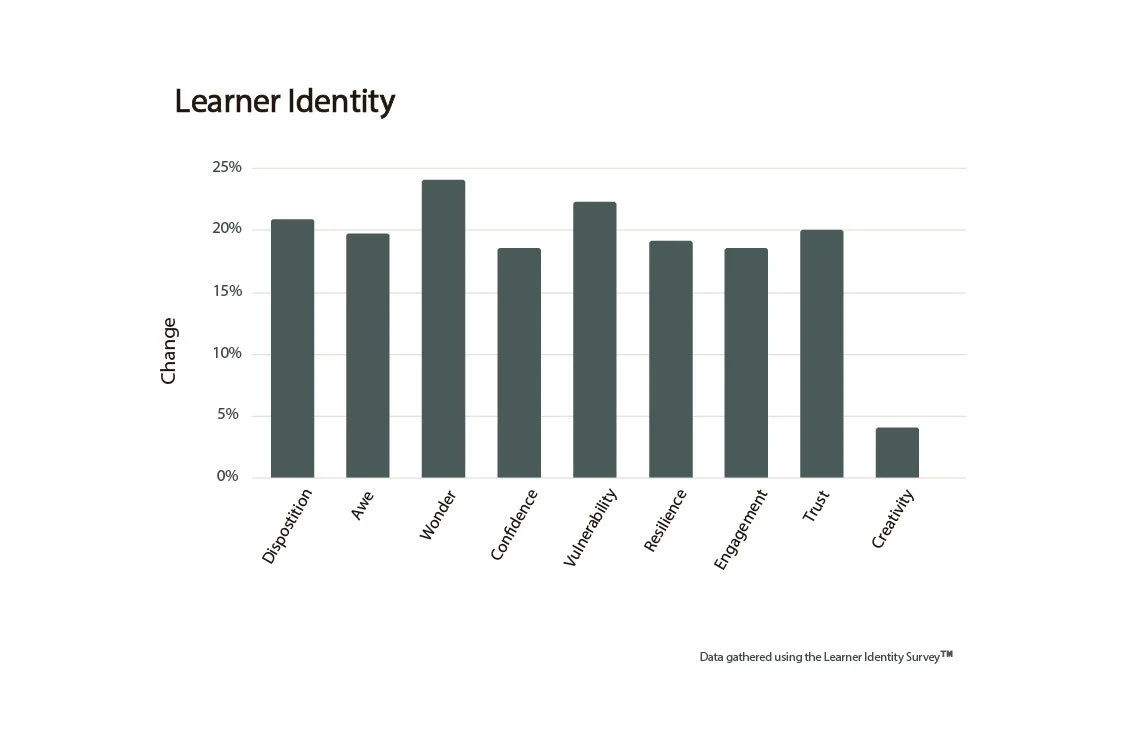Our Impact
Agile-based learning practices, inspired by our innovation industries, increase student engagement, cultivate a growth mindset, and improve academic achievement.
By using Agile-based learning frameworks, educators are able to challenge students to become authentic learners where they have to grapple with concepts, create connections to their own lives and find ways to explain the meaning of their deep learning through powerful stories.
That’s what happened in Dayton, Oregon where their public school first experimented with this approach, a story that was told in a book, The Dayton Experiment. Within three short years, they achieved what all schools aspire to reach, a 100% graduation rate. Why? Because every student felt seen, heard and felt and became confident learners growing into their creative potential.
It all began with increasing student engagement.
Walk into any classroom and you could see real learning happening, engaged learning.
With the help of one of their brilliant educators, these Agile-based practices were formed into an Agile-based learning framework, Designed inGenuity (DiG), that began to be shared with schools around the world.
A school in Australia introduced these new learning practices with three out of five educators in one year level.
When they compared the academic performance of students in a class that adopted the Agile Mindset with a class that used traditional direct instruction, they were delighted by the results.
Students in the class that used the DiG framework had more than a letter grade improvement in their overall A-E scores, as well as a very different distribution, with 60% of those students achieving an A or a B grade scores on their standardized assessment.
Educators in middle schools in Ohio have seen a profound impact on student engagement when educators lead with curiosity and challenge their students to develop both critical and creative thinking through the DiG framework.
The students consistently demonstrated higher levels of engagement across all three dimensions of behavioral, emotional and cognitive.
This heightened engagement is crucial for students to attain higher levels of knowledge and understanding, ultimately leading to deeper learning experiences.
This new learning culture has led to significant changes in these students’ learner identities.
The DiG creates the conditions for sparking the curiosity and wonder of students, increasing their vulnerability and willingness to share that they are grappling with a new idea, concept or understanding. As they begin to trust that it is safe to “not know",” they are empowered to become more excited about their learning.
Our survey tools enable students to self-assess their learning identity across the nine key characteristics of an engaged learner.
The impact of authentic learning in classrooms is helping to reconnect educators to the joy of teaching, increasing their commitment to their profession, their sense of confidence and ability to reflect on the rewards of successfully engaging with their students.
A school that we are working with in England has seen their teacher retention challenges completely disappear as their teachers live into a new sense of vitality.
Our measurement tool supports school leaders to have powerful conversations with their educators to enhance their professional learning experiences.







